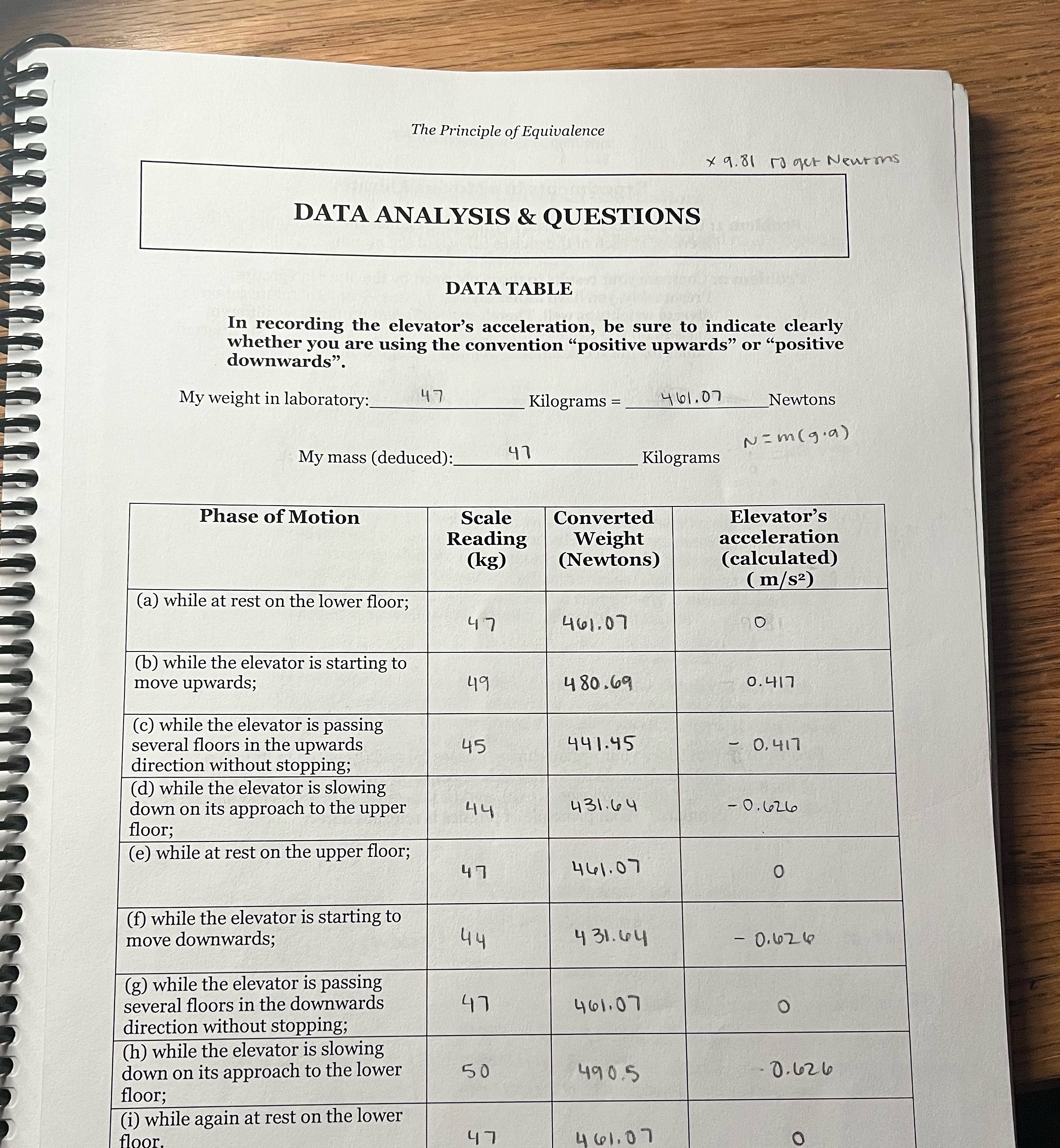Answered step by step
Verified Expert Solution
Question
1 Approved Answer
How does your weight during phases (c) and (g) of the motion [i.e. motion upwards or downwards at constant velocity] compare with your weight sharing
How does your weight during phases (c) and (g) of the motion [i.e. motion upwards or downwards at constant velocity] compare with your weight sharing phases (a), (e), and (i) [i.e. sitting at rest]? How SHOULD they compare? What principle of physics is relevant here?

Step by Step Solution
There are 3 Steps involved in it
Step: 1

Get Instant Access to Expert-Tailored Solutions
See step-by-step solutions with expert insights and AI powered tools for academic success
Step: 2

Step: 3

Ace Your Homework with AI
Get the answers you need in no time with our AI-driven, step-by-step assistance
Get Started


